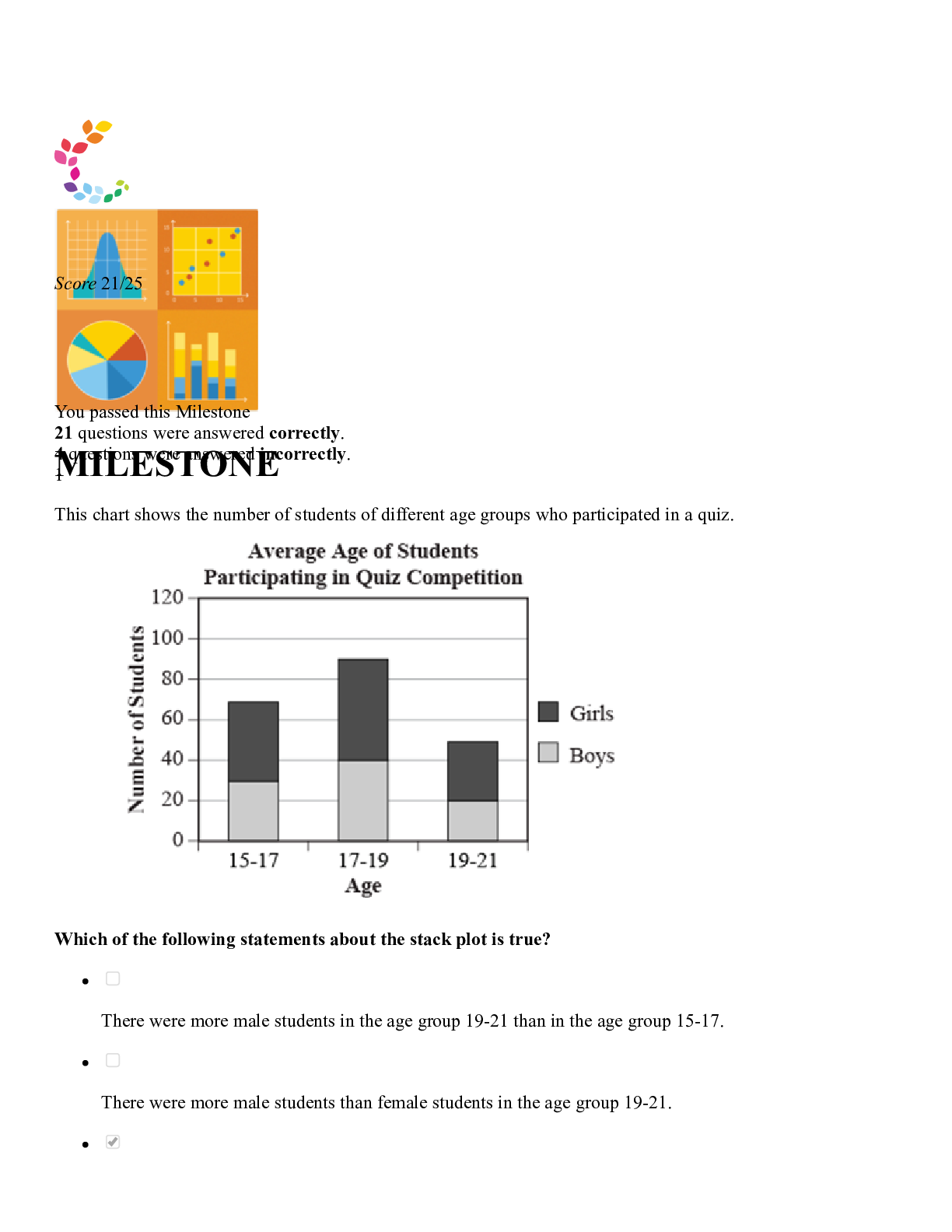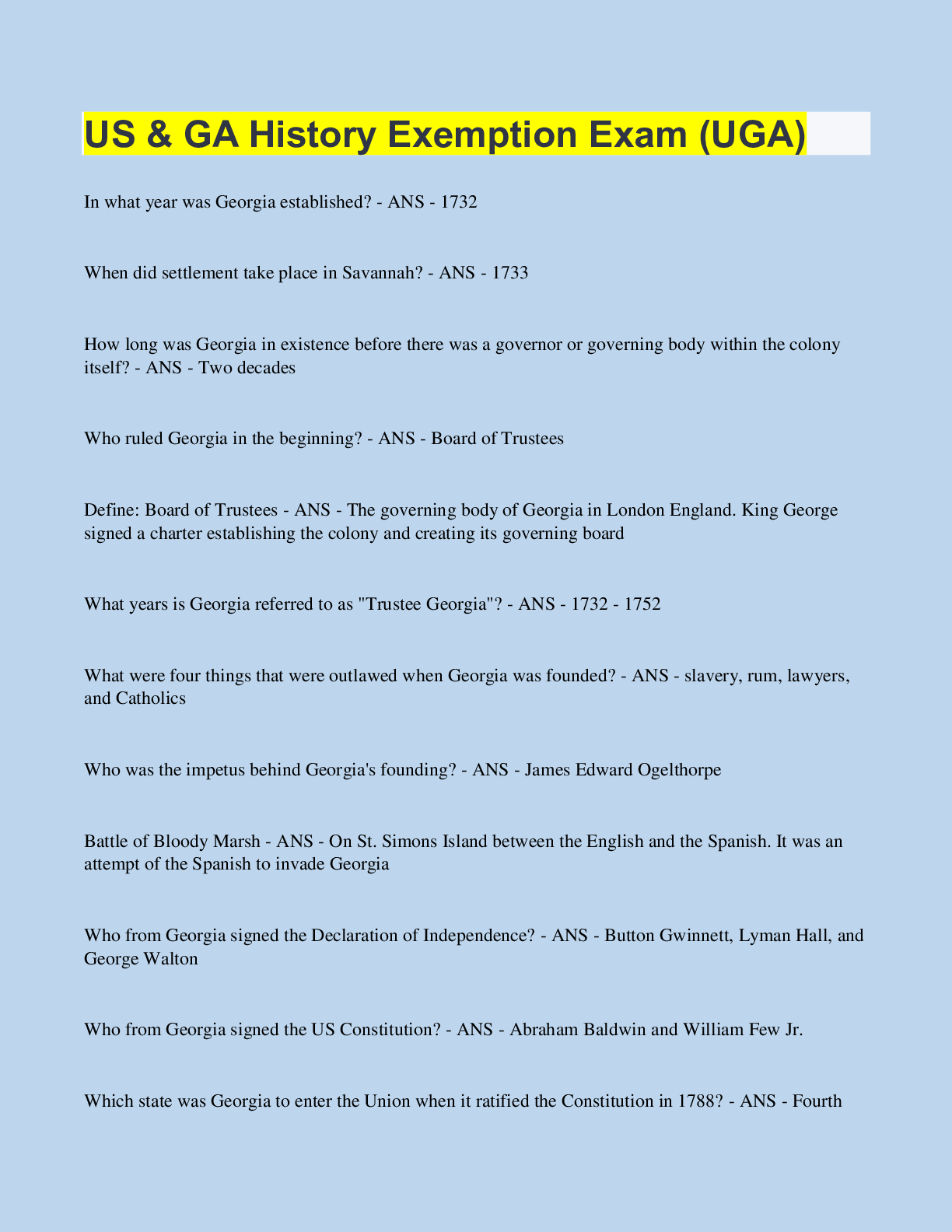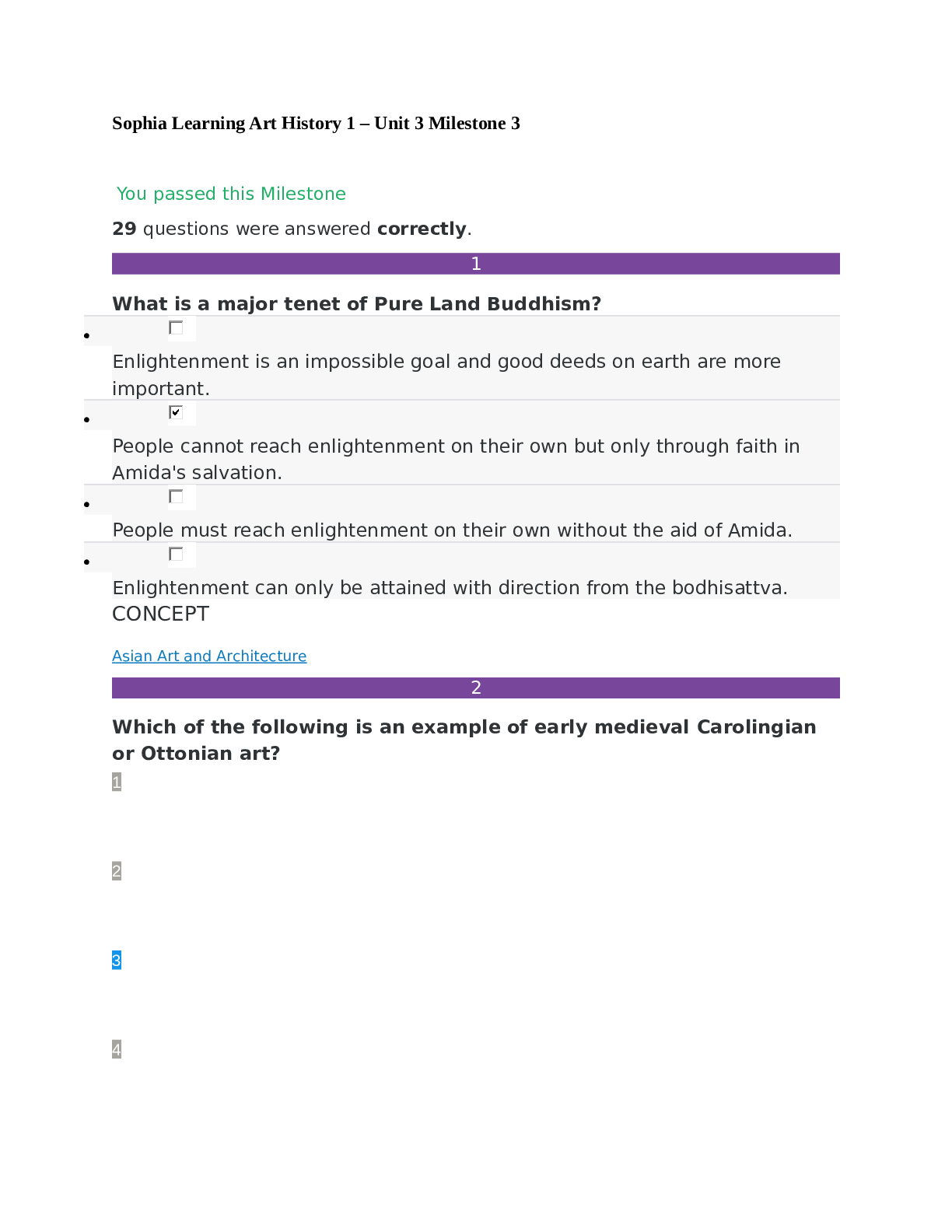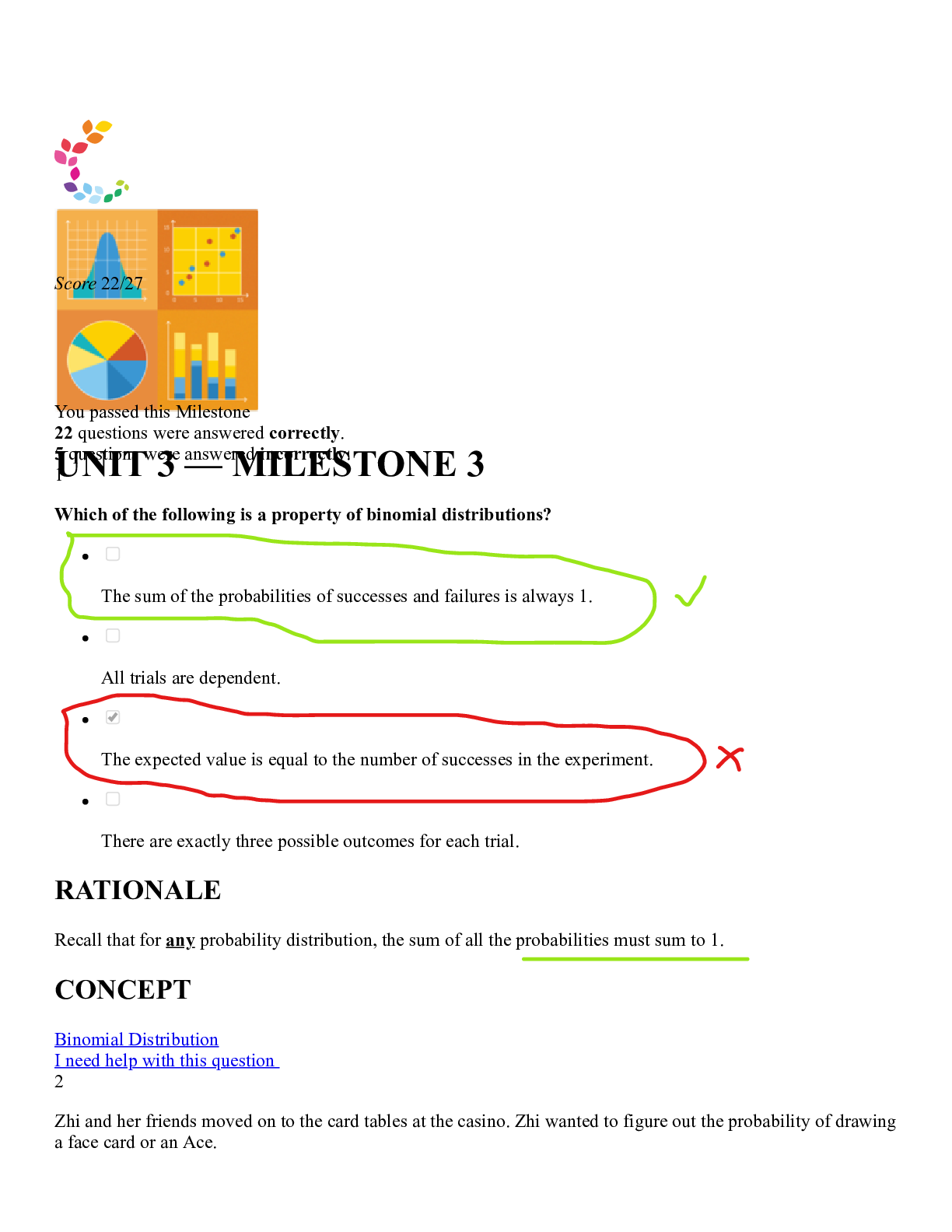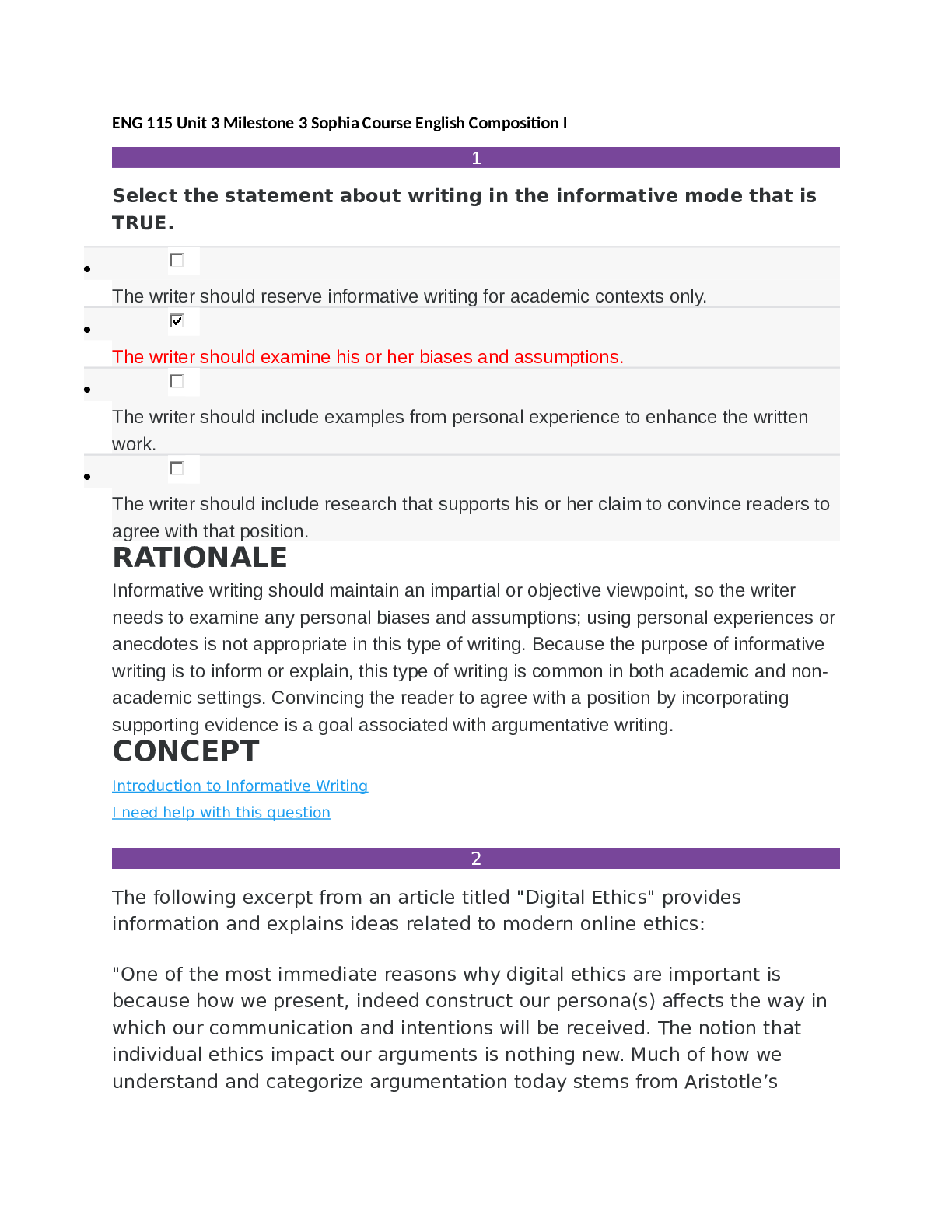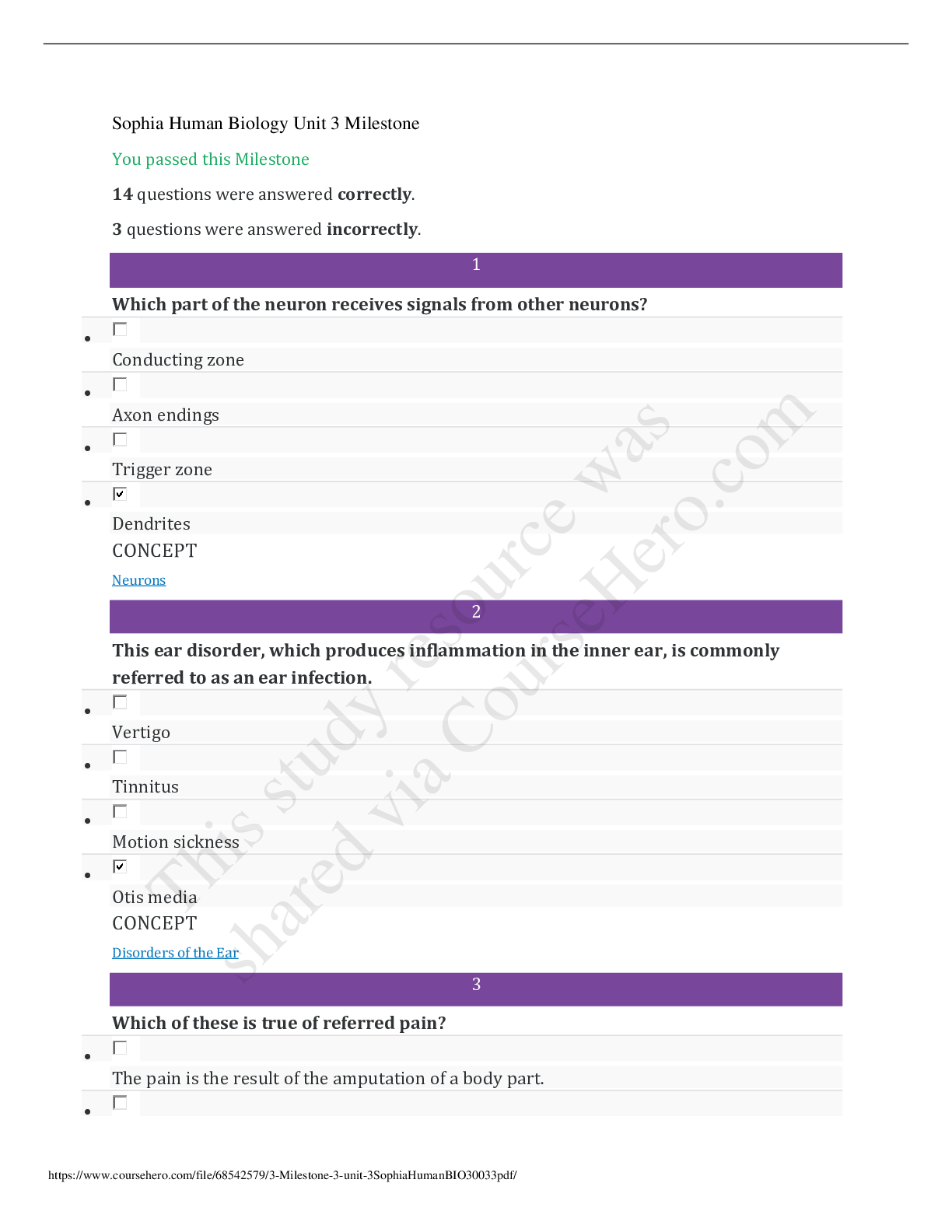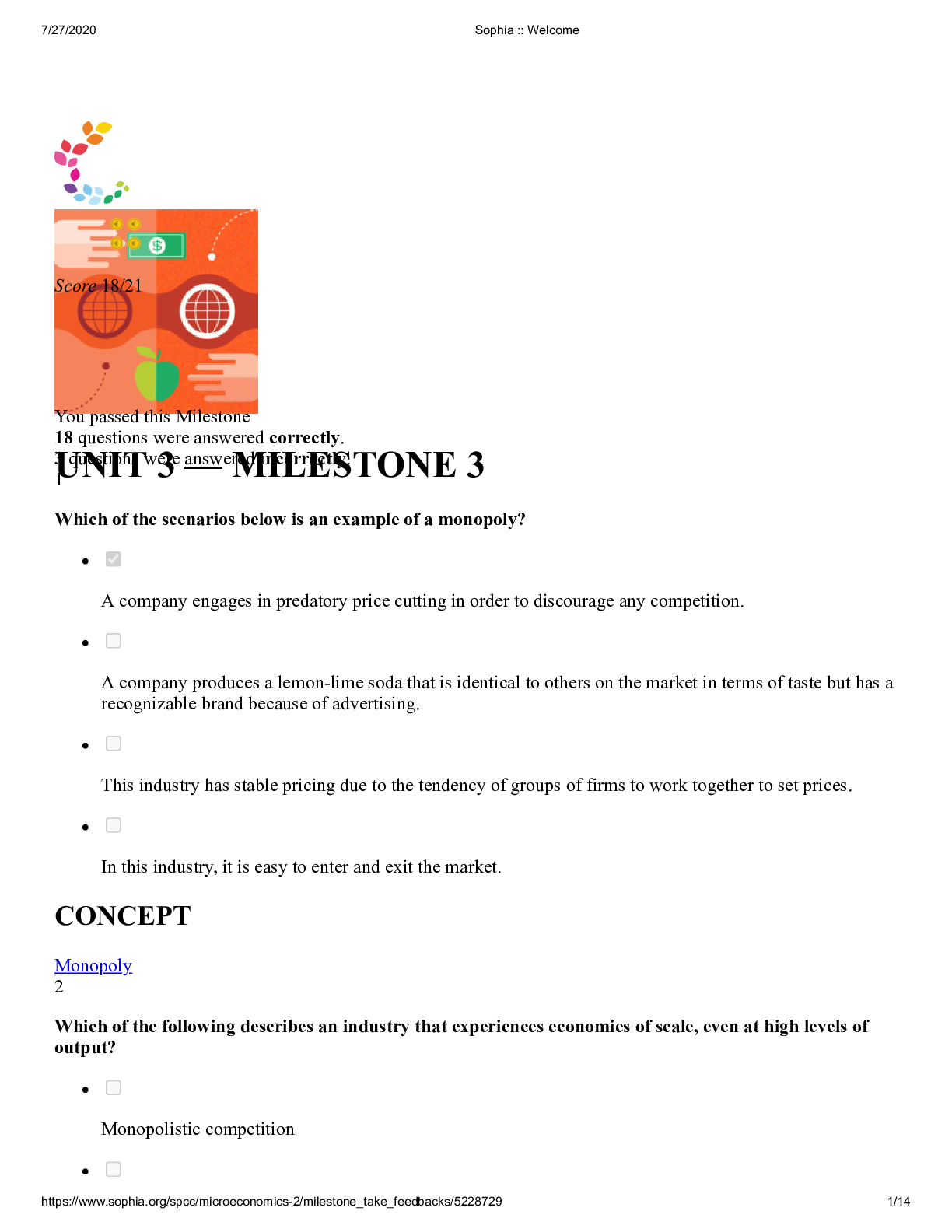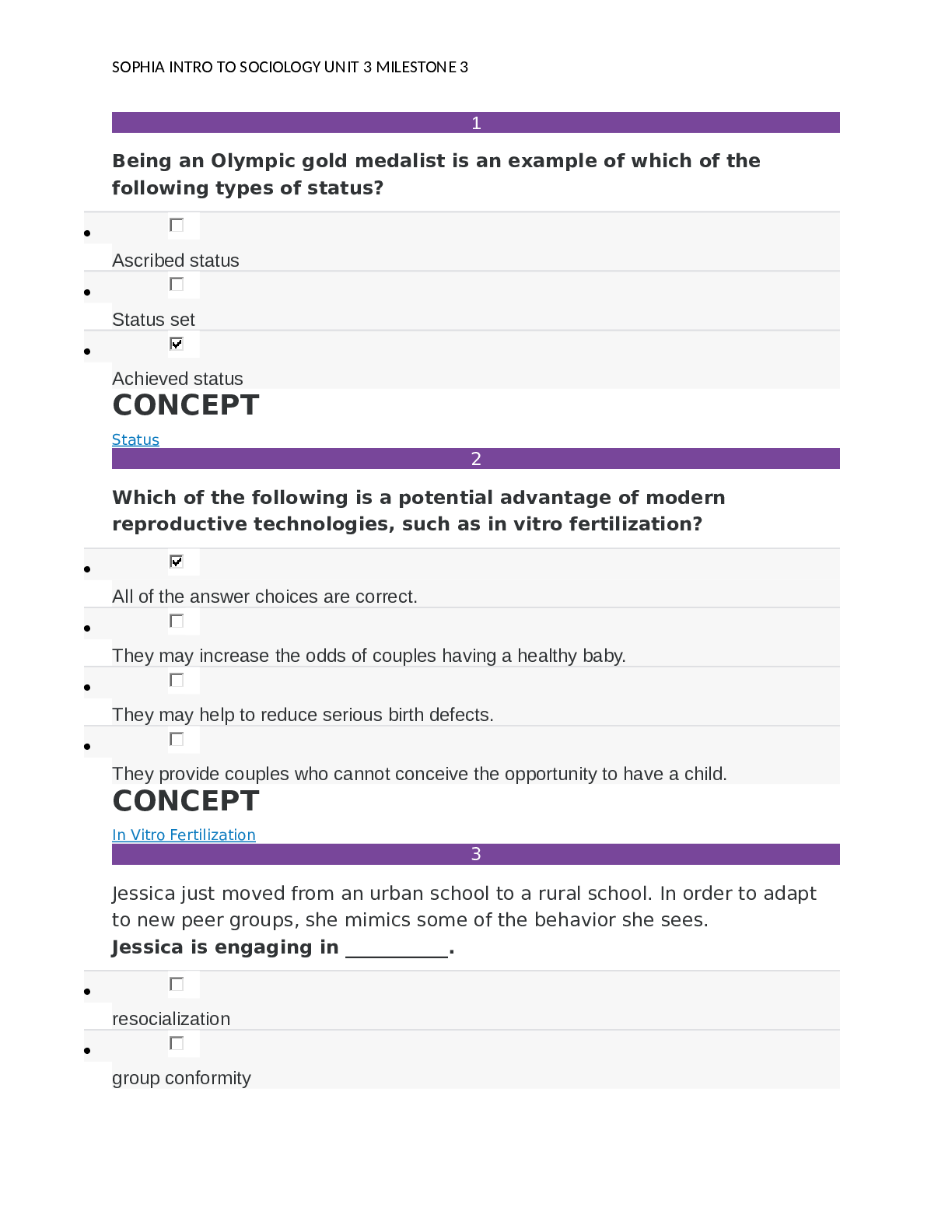Statistics > SOPHIA Milestone > Sophia Statistics Unit 3 Milestone Exam| Graded A+| Download Now (All)
Sophia Statistics Unit 3 Milestone Exam| Graded A+| Download Now
Document Content and Description Below
Which of the following is a property of binomial distributions? The sum of the probabilities of successes and failures is always 1. All trials are dependent. The expected value is equal... to the number of successes in the experiment. There are exactly three possible outcomes for each trial. RATIONALE Recall that for any probability distribution, the sum of all the probabilities must sum to 1. CONCEPT Binomial Distribution I need help with this question 2 Zhi and her friends moved on to the card tables at the casino. Zhi wanted to figure out the probability of drawing a face card or an Ace. Choose the correct probability of drawing a face card or an Ace. Answer choices are in the form of a percentage, rounded to the nearest whole number. 8% 4% 31% 25% RATIONALE Since the two events, drawing a face card and drawing an ace card, are non-overlapping, we can use the following formula: CONCEPT "Either/Or" Probability for Non-Overlapping Events I need help with this question 3 John is playing a game with a standard deck of playing cards. He wants to draw a jack on the first try. Which of the following statements is true? The probability that John draws a jack on the first try is 1/13. If John replaces the card, re-shuffles, and draws again, the probability that he will pull another jack increases. The probability that John draws a jack on the first try is 1/13. If John replaces the card, re-shuffles, and draws again, the probability that he will pull another jack stays the same. The probability that John draws a jack on the first try is 3/13. If John replaces the card, re-shuffles, and draws again, the probability that he will pull another jack stays the same. The probability that John draws a jack on the first try is 1/13. If John replaces the card, re-shuffles, and draws again, the probability that he will pull another jack decreases. RATIONALE Events are said to be independent if one event does not influence the likelihood of the other. Since John re- shuffles the deck and puts the card back in the deck, the probability should be the same and the first draw will not influence the second. [Show More]
Last updated: 2 years ago
Preview 1 out of 25 pages

Buy this document to get the full access instantly
Instant Download Access after purchase
Buy NowInstant download
We Accept:

Reviews( 0 )
$9.00
Can't find what you want? Try our AI powered Search
Document information
Connected school, study & course
About the document
Uploaded On
May 05, 2021
Number of pages
25
Written in
Additional information
This document has been written for:
Uploaded
May 05, 2021
Downloads
0
Views
109
